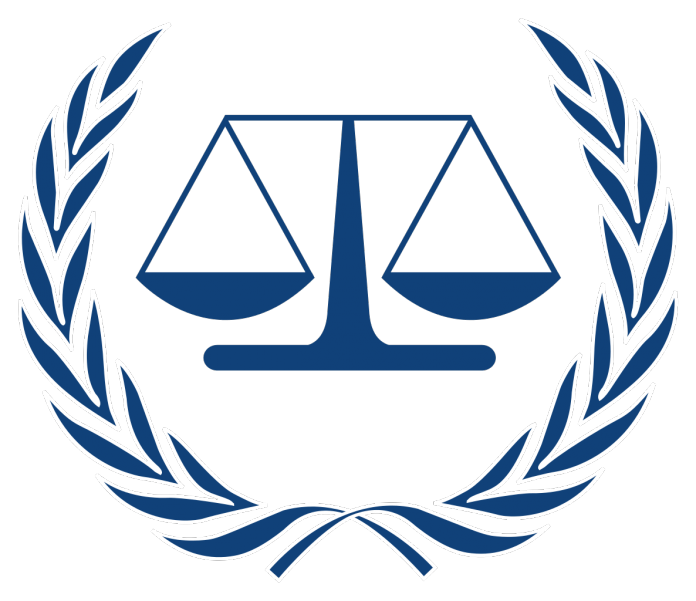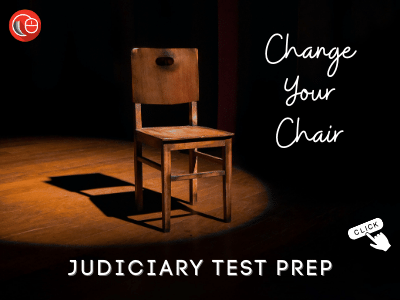This article is written by Diganth Raj Sehgal, Student, School of Law, Christ University, Bangalore. The author in this article discusses wrongful restraint and wrongful confinement under section 339 and 340 of the Indian Penal Code. The author also discusses the types of wrongful confinement and their punishments under the code.
Introduction
Under the Constitution of India, in Articles 19 and 21, every person throughout the territory of India is conferred with the right to freedom of movement and is guaranteed personal liberty. In furtherance of this objective set up by the Constitution, the Indian Penal Code lays down penal sanctions in case a person violates the freedom of movement or personal liberty of another. This is done so as to safeguard an individual’s right to liberty against deprivation by another individual or groups other than State (as fundamental rights only place an obligation on the state).
Section 339 and 340 of Indian Penal Code define Wrongful Restraint and Wrongful Confinement respectively. The Indian Penal Code, 1860 makes wrongful restraint and wrongful confinement punishable under Section 339 to 348.
To understand wrongful restraint and confinement, we first need to understand the meaning of wrongful. In criminal law, wrongful is defined as an act which is injurious, heedless, reckless, unjust, unfair, unlawful and negligent. It includes any act which is unlawful or unauthorized or any other act of this nature which amounts to a civil wrong. The following sections deal with the concepts in detail.
Wrongful Restraint
Definition
According to Section 339 of the Indian Penal Code;
“Whoever voluntarily obstructs any person so as to prevent that person from proceeding in any direction in which that person has a right to proceed, is said wrongfully to restrain that person.”
Further, the section also lays down an exception, which is that if a person in good faith believes himself to have a lawful right to obstruct and so obstruct a private way over land or water, then it does not amount to wrongful restraint.
To understand this, let us look at the following illustration-
Chitra is walking on a public road on which she has a right to pass. Rajesh obstructs this path despite knowing that he had no right to stop the path. As Chitra was prevented from passing, Rajesh can be said to have wrongfully restrained Chitra.
Ingredients
To establish the offence of wrongful restraint the complainant must prove all the following essential:
- That there was an obstruction;
- That the obstruction prevented the complainant from proceeding in any direction;
- That the person/complainant so proceeding must have a right to proceed in the direction concerned.
Objective
The objective of this section is to ensure that the freedom of a person is protected. When a person has a right to proceed in a particular direction then the law must ensure that such right is available to the person. Even if there is a slight unlawful obstruction, it is deemed to be wrongful restraint.
It is neither necessary that the obstruction caused must be physical nor is the presence of the accused essential for the restraint to be wrongful under this section.
The presence of assault is not required for the act to amount as wrongful restraint. Even use of mere words to cause obstruction to the path of a person may constitute as an offence under this section.
When a person obstructs another by-
- Causing it to appear to that other person that to proceed would be;
- impossible
- difficult
- dangerous
- Or by actually causing it to be impossible, difficult or dangerous for that other person to proceed
Lastly, it must be noted that in order to invoke this section and to prove the offence under this section, it is essential for the complainant to prove his right of way over the land.
Punishment
Section 341 of the Indian Penal Code imposes punishment against the wrongdoer under Section 339 with simple imprisonment for a term which may extend to one month or with fine which may extend to five hundred rupees, or with both.
The classification of the offence under this section is that the offence is Cognizable, Bailable and Triable by any Magistrate, it is also compoundable by the person restrained or confined.
Cases
In the case of Madala Perayya vs. Varugunti Chendrayya (1954 CrLJ 283 Mad), the facts were that, the accused and the complainant jointly owner a well and so both of them were entitled to use the water for agricultural purposes. The accused stopped the complainant from using the water and also stopped the bullocks of the complainant from moving. The Court held that the accused had committed eh offence of wrongful restraint under Section 339.
In the case of Shoba Rani vs. The King (1950-51 CrLJ 668 Cal.), the landlord was accused of preventing his tenant who was the tenant from using the bathroom. By stopping the tenant from using something that he had the right to use, the landlord was had committed wrongful restraint under Section 339.
Further, in the case of Souri Prasad Patniak vs. State of Orissa (1989 CrLJ 169 Ori), the accused was a veterinary surgeon who did not receive payments for several months. When his superior officer visited the office and started back to go, the accused stood in front of the jeep and raised protest for non-payment of his salary. However, after his protest, he had given the way to jeep. The Orissa High Court held that the accused was not guilty of the offence of wrongful restraint.
Wrongful Confinement
Definition
According to Section 340 of the Indian Penal Code;
“Whoever wrongfully restrains any person in such a manner as to prevent that person from proceeding beyond certain circumscribing limits is said to have committed the offence of wrongful confinement.”
Illustrations:
- Radhika causes Anamika to go within a walled space and locks Anamika in. Anamika is thus prevented from proceeding in any direction beyond the circumscribing line of the walls and so Radhika has wrongfully confined Anamika.
- Gabbar places men with firearms at the outlets of a building and tells Veeru that they will fire at him if he attempts to leave the building. Here, Gabbar has wrongfully confined Veeru.
Ingredients
The essential ingredients of the offence of wrongful confinement are:
- The accused should have wrongfully restrained the complainant (i.e. all ingredients of wrongful restraint must be present)
- Such wrongful restraint was to prevent the complainant from proceeding beyond certain circumscribing limits beyond which he or she has the right to proceed.
Punishment
Section 342 of the Indian Penal Code states that whoever wrongfully confines any person shall be punished with imprisonment of either description for a term which may extend to one year, or with fine which may extend to one thousand rupees, or with both The classification of this offence is that it is cognizable, Bailable and Triable by any Magistrate. Further, it is Compoundable by the person confined with the permission of the court.
Cases
In the case of State of Gujarat vs. Keshav Lai Maganbhai Gujoyan (1993 CrLJ 248 Guj), it was discussed by the court that “For a charge of wrongful confinement, proof of actual physical restriction is not essential. It is sufficient if the evidence shows that such an impression was produced in the mind of the victim, a reasonable apprehension in his mind that he was not free to depart. If the impression creates that the complainant would be forthwith seized or restrained if he attempts to escape, a reasonable apprehension of the use of the force rather than its actual use is sufficient and important.”
State vs. Balakrishnan (1992 CrLJ 1872 Mad), the complainant was detained in the police station when this was brought to court, the accused claimed that complainant was at liberty to go away from the police station at any time. The Court remarked that when a citizen enters into a police station, the police officers’ authority prevails in that jurisdiction and they entertain it with a ruddy manner. Court held that the accused committed the offence of wrongful confinement.
Types of Wrongful Confinement
1. Wrongful confinement for three or more days ( Section 343)
“Whoever wrongfully confines any person for three days, or more, shall be punished with imprisonment of either description for a term which may extend to two years, or with fine, or with both.” The classification of this offence is that it is Cognizable, Bailable and Triable by any Magistrate, further, it is also Compoundable by the person confined with the permission of the court.
2. Wrongful confinement for ten or more days (Section 344)
“Whoever wrongfully confines any person for ten days, or more, shall be punished with imprisonment of either description for a term which may extend to three years, and shall also be liable to fine.” The classification of this offence is that it is Cognizable, Bailable and Triable by any Magistrate, further, it is also Compoundable by the person confined with the permission of the court.
3. Wrongful confinement of person for whose liberation writ has been issued (Section 345)
“Whoever keeps any person in wrongful confinement, knowing that a writ for the liberation of that person has been duly issued, shall be punished with imprisonment of either description for a term which may extend to two years in addition to any term of imprisonment to which he may be liable under any other section of this Chapter.” The classification of this offence is that it is Cognizable, Bailable and Triable by Magistrate of the first class. Further, this offence is Non-compoundable.
4. Wrongful confinement in secret (Section 346)
“Whoever wrongfully confines any person in such manner as to indicate an intention that the confinement of such person may not be known to any person interested in the person so confined, or to any public servant, or that the place of such confinement may not be known to or discovered by any such person or public servant as hereinbefore mentioned, shall be punished with imprisonment of either description for a term which may extend to two years in addition to any other punishment to which he may be liable for such wrongful confinement.” The classification of this offence is that it is Cognizable, Bailable and Triable by Magistrate of the first class, further, it is also Compoundable by the person confined with the permission of the court.
5. Wrongful confinement to extort property, or constrain to illegal act (Section 347)
“Whoever wrongfully confines any person for the purpose of extorting from the person confined, or from any person interested in the person confined, any property or valuable security or of constraining the person confined or any person interested in such person to do anything illegal or to give any information which may facilitate the commission of an offence, shall be punished with imprisonment of either description for a term which may extend to three years, and shall also be liable to fine.” The Classification of this offence is that it is Cognizable, Bailable and Triable by any Magistrate. Further, it is Non-compoundable.
6. Wrongful confinement to extort confession, or compel restoration of property (Section 348)
“Whoever wrongfully confines any person for the purpose of extorting from the person confined or any person interested in the person confined any confession or any information which may lead to the detection of an offence or misconduct, or for the purpose of constraining the person confined or any person interested in the person confined to restore or to cause the restoration of any property or valuable security or to satisfy any claim or demand, or to give information which may lead to the restoration of any property or valuable security, shall be punished with imprisonment of either description for a term which may extend to three years, and shall also be liable to fine.” The classification of this offence is that it is Cognizable, Bailable and Triable by any Magistrate and it is Non-compoundable.
Difference between Wrongful Restraint and Confinement
| Wrongful Restraint | Wrongful Confinement |
| It is the genus, i.e. it is a wider term and includes several types of restraints under it. | It is a species of wrongful restraint i.e. a type of wrongful restraint. |
| It prevents a person from proceeding in a direction in which that person has a right to proceed. | It keeps a person within certain circumscribing limits. |
| It is not a very serious offence and is punishable with lesser punishment. | It is a more serious offence and is punishable with a more severe punishment than wrongful restraint. |
| There is only a partial suspension of one’s liberty. | There is total suspension of liberty beyond certain circumscribing limits. |
| Punishment: Sec. 341. Imprisonment to one month, or fine Rs. 500/-, or with both. | Punishment: Sec. 342. Imprisonment to one year, or fine Rs. 1000/-, or with both. |
Conclusion
An easy way to understand this is that wrongful Restraint is essentially a restraint in a line, this means that it involves all sorts of restraint that happen in a path or road or any sort of movement in a straight line. Here the person has the option to go back or left or right as he is just restrained from going forward. This is punishable because here a person has a right to move on such path and other person has restricted such movement.
Example- When Alia was walking down the school corridor, Varun stopped her by standing in her way and wrongfully restrained her. Further, if Varun would have merely told Alia that if she would go down the corridor, then a bucket full of paint would fall on her and because of this Alia did not go down the corridor, then also Varun has wrongfully restrained her.
On the other hand, wrongful confinement is in a Circle, this means that it involves all sorts of restraints that happen in a circumscribed limit such as restriction from leaving a room or building or a park etc.
Examples- When General Dyer entered the Jallianwala Bagh and blocked every exit for the people to escape, he wrongfully confined the people or when Krishna’s mother Yashoda tied him to a trunk, here she in a way completely restricted his movements and thereby wrongfully confined him.
 Serato DJ Crack 2025Serato DJ PRO Crack
Serato DJ Crack 2025Serato DJ PRO Crack








 Click above
Click above




 Allow notifications
Allow notifications


